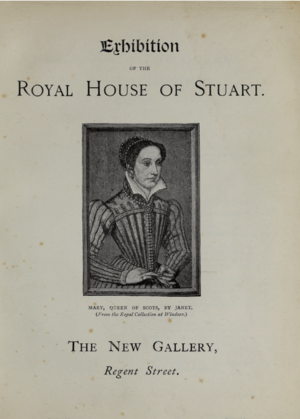Order of the White Rose (1886–1915) facts for kids
The Order of the White Rose was a special group started in 1886 by Bertram Ashburnham, 5th Earl of Ashburnham. It was like a new version of an older club called the Cycle Club. This Order brought together many writers and artists. It helped start a new interest in the Jacobite cause, known as the Neo-Jacobite Revival, which was popular in the 1890s.
The Order closed down during the First World War. However, in 1926, the Royal Stuart Society was created to continue its goals and ideas.
History of the Order
Jacobites were people who wanted the House of Stuart family to be kings and queens of England, Scotland, and Ireland again. After the Jacobite rising of 1745 was defeated, Jacobites were watched closely. They had to form secret clubs to talk about their ideas privately.
One famous secret group was the "Cycle of the White Rose," often called the Cycle Club. It was started in 1710 by the Williams-Wynn family in North Wales. The Cycle Club kept meeting with the family's support until the 1860s.
How the Order Started
In 1886, Bertram Ashburnham sent out a message looking for people who supported the Jacobite cause. One person who replied was Melville Henry Massue. Together, they created the Order of the White Rose. This new Jacobite group was seen as carrying on the spirit of the old Cycle Club. The Order officially began on June 10, 1886.
The Order was also influenced by the Oxford Movement from the 1830s and 1840s. This movement promoted Anglo-Catholicism and saw King Charles I as a hero.
The Order attracted people who wanted independence for Ireland and Scotland. These different groups joined together to support bringing back the House of Stuart. They also shared a dislike for some of the new scientific and democratic ideas of their time. Some members even thought about trying to remove the current royal family (the Hanoverians) by force. Their goal was to put Princess Maria Theresa on the British throne.
The Neo-Jacobite Revival
In 1889, the New Gallery in London held a big exhibition. It showed many items connected to the House of Stuart. Henry Jenner helped organize this event. Bertram Ashburnham, who was the president of the gallery, convinced Queen Victoria to lend some items. Princess Helen of Waldeck and Pyrmont, who was Victoria's daughter-in-law, also lent items. Families from England and Scotland who had Jacobite connections also donated things to display.
The exhibition was very popular and brought new public interest in the House of Stuart and Jacobitism.
The Order of the White Rose was mostly about romantic feelings and looking back at the past. It attracted artists and writers. Some members included Frederick Lee, Henry Jenner, Kitty Lee Jenner, James Abbott McNeill Whistler, Robert Edward Francillon, Charles Augustus Howell, Stuart Richard Erskine, Andrew Lang, and Herbert Vivian. The Order even published its own newspaper called The Royalist from 1890 to 1903.
The success of the exhibition sparked new interest in the political ideas of the Jacobite cause. This was especially true among people who supported monarchies and Anglo-Catholics. After the exhibition, new Jacobite groups started to form. In 1890, Vivian and Erskine started a weekly newspaper called The Whirlwind, which supported Jacobite political views.
Ashburnham did not really support the political side of the movement. In 1891, the Order of the White Rose split. Vivian, Erskine, and Melville Henry Massue formed a new group called the Legitimist Jacobite League of Great Britain and Ireland. Vivian and Massue were important leaders in this new Jacobite movement. Erskine soon focused his efforts on Scottish Nationalism, which was a related cause. The League helped spread Jacobite ideas more widely than had been seen since the 1700s. Several other Jacobite groups formed in the early 1890s. Even though they were serious, many people found them amusing.
The Order was the main group for the artistic and historical side of Jacobitism. Art dealer Charles Augustus Howell and journalist Sebastian Evans were members. Poets like W. B. Yeats and Andrew Lang were also interested in the cause. By 1910, the Order had even inspired a branch in North America.
The Order Closes
In 1914, soon after the First World War began, Prince Rupprecht appeared in a German army uniform. According to Jacobite beliefs, he was the rightful king of England, Ireland, and Scotland. His support for the Kaiser (the German Emperor) made many people turn against the Neo-Jacobites. Many supporters left, and the Order quickly closed down.


